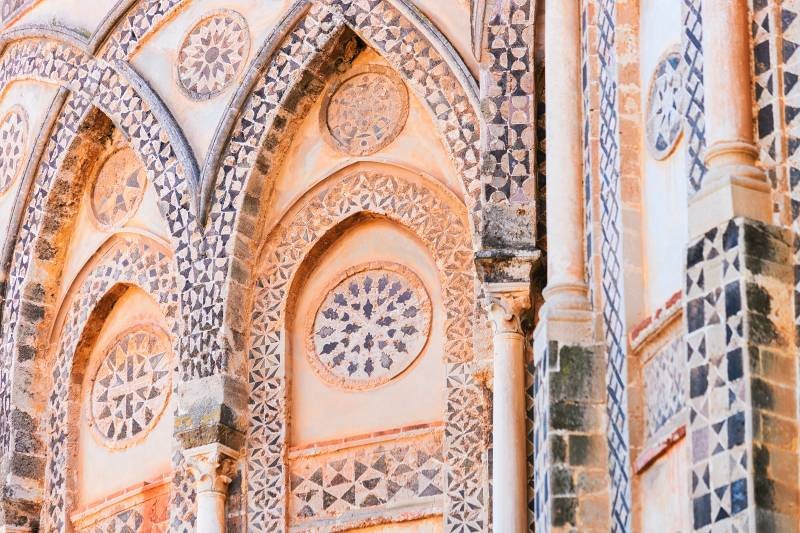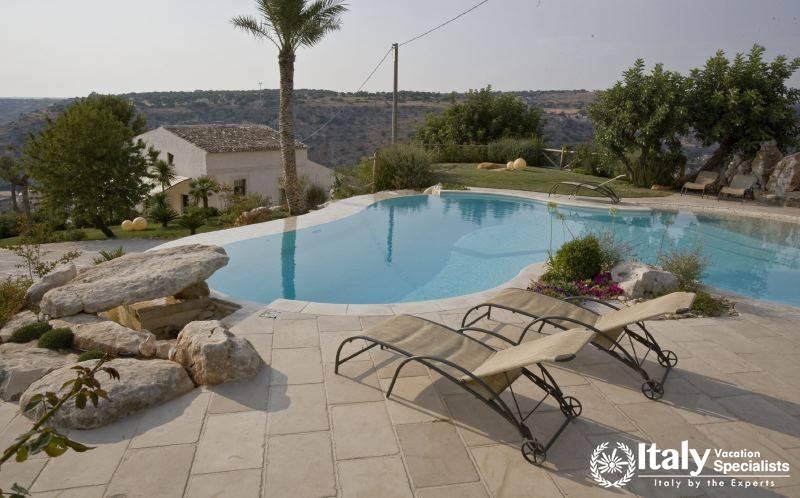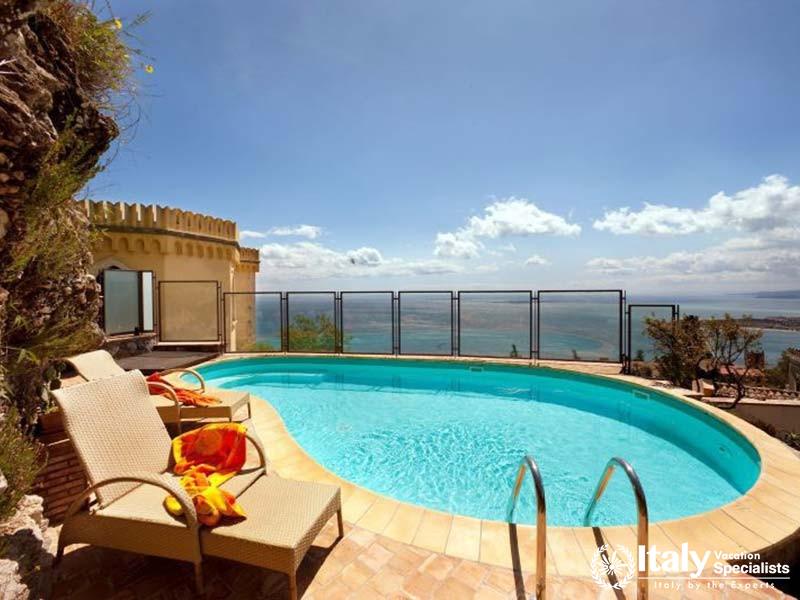Overview
After Greeks, Carthaginians, Romans, Vandals and Byzantines, came the Saraceni, the Arabs, the great gardeners of Sicily. They brought irrigation and cultivation: their gifts ran from silk and citrus fruits to sanitation and better fishing methods. Sicily became a jigsaw of Emirates. Then, in 1064, came adventurers from the north, Norman mercenaries who had struck a deal with the Pope. If you can break the Muslim hold on that strange, off-shore other world, you can have it, ran the terms. With their long lances and heavy armour the Normans conquered, but did not scourge. Instead they ruled a tolerant society, where Arab civilisation, learning and craftsmanship were prized. And so Sicily became something else, a kingdom of God where Allah was also worshipped, the world's first harmony of East and West (and a vexation to successive popes). You can still feel it in Palermo's old centre. In the extraordinary Norman-Arab architecture, you can still see it.

Painting of Monreale, Sicily by Martin Mathews
We should be well prepared, starting the day in Pasticceria Alba, or any one of Palermo's 1950s cafés, with a fresh orange juice (we are on the clasp of the orange belt stretching from Seville to Damascus), acornetto alla crema, a lemon-custard croissant (because we are on holiday), and a coffee (only in Ethiopia can you get better coffee). Charged with sugar, caffeine and anticipation, we go up Corso Vittorio Emanuele, which begins at the sea, past the cathedral, a great stone ship designed by Normans, trimmed and decorated by Arabs, to the Norman Palace. We marvel at the Palatina Chapel, commissioned by Roger II, greatest of the Norman rulers, whose nameless masters of wood, stone and decoration made him a chapel like a little jewellery box, fit for God.
Next we take a bus to Monreale, 15km south of Palermo. Monreale is the crown of the Conca d'Oro, the Golden Shell, the great sweep of bay from Monte Pellegrino to the mountains that cradles Palermo and is only matched in beauty by the Bay of Naples. The cathedral of Monreale was constructed by William the Good, a Norman king who fell headlong into the temptations of the East (his lifestyle would have embarrassed a sultan) but not before he had put Arab artists, Byzantine mosaicists and Norman architects to work creating one of the wonders of the world.
The interior of the cathedral is the Sistine Chapel of medieval Europe. It is a golden vision, a dream of the testaments, Old and New. The mosaics tell their stories in a downpour of colour, life and drama. It is as close as the visual arts can come to the power of music. We stand as the first worshippers would have stood, when the doors were opened, and townsfolk, court, craftsmen and king gazed up at what they had done. They must have known it at once: here is a splinter of eternity. Here is man's tribute to the Kingdom, the Power Glory. The Sicilians have a typically pithy attitude to their treasure. Who visits Sicily without seeing Monreale arrives a donkey and leaves a beast, they say.
Norman Palace open Mon, Fri, Sat, 9am-noon. Palatina Chapel open Mon-Fri, 9am-11.45am, 3pm-4.45pm. Monreale Cathedral open daily, 8am-noon; 3.30pm-6.30pm. 'The Blue Guide to Sicily' and Vincent Cronin's 'The Golden Honeycomb' are useful accompaniments.
For a personal guide of Monreale and any other tours in Sicily, contact us at: info@italygroupspecialists.com or call us toll free anytime to have one of our knowledeable experts speak with you about how to best organize your tour of Monreale and many other destinations in Sicily.
Gallery
Location
Private and Small Group Tours
Multi-Day Holidays Tours
Hotel
Villas
Apartment
Gallery



Our Private and Small Group Tours
Our Multi-Day Holidays Tours
For Customized Holidays and Expert Advice, for travel in Italy and the Mediterranean,
get in touch with your travel agent or contact us via our
Trip Planning Questionnaire.
-
Direct In Italy: +39 375 823 5314
-
Toll Free: 1-866-779-2565



























